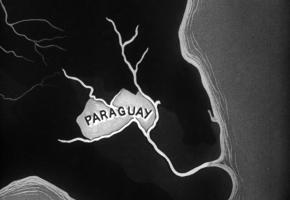Fernando Ezequiel 'Pino' Solanas
On October 16th, Pino Solanas had announced that, with his wife Ángela Correa, they had contracted Covid-19 and were being interned under observation. Movingly, he wrote a final memo to his friends: -
“Friends, I am still in intensive care. My condition is delicate and I am well cared for. I continue to resist. With my wife, Angela, who is also hospitalized, we want to thank everyone for their support. Do not stop taking care of yourself.”
Always profoundly motivated by social and political issues, Fernando ‘Pino ‘Solanas created works that challenged the establishment thinking of the time and produced films that now stand as important documents of the history of Argentine and even Latin American cinema. Born in Olivos, in the province of Buenos Aires on February 16th 1936, he studied music, theatre, dance, and law and set out on his path of radical activist cinema with his first short,’Seguir Andando’ (1962).
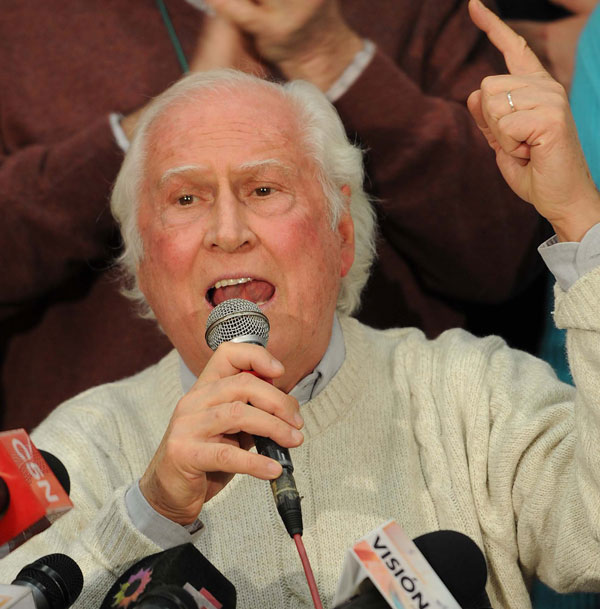
Pino Solanas
He worked with images and film to convey his messages, but also took an active role in politics. In 2007, he ran for president, uniting his Party Proyecto Sur (Project South) with the Partido Socialista Auténtico (Authentic Socialist Party) obtaining 2% of the vote and finishing 5th. Famous for his fiery and passionate speeches, he served as a National Senator and a deputy, representing the Autonomous City of Buenos Aires for six years, from 2013 to 2019. In June 2019, true to form, he joined the Frente de Todos (Front for All) coalition and endorsed the presidential candidacy of Alberto Fernández, who became President.
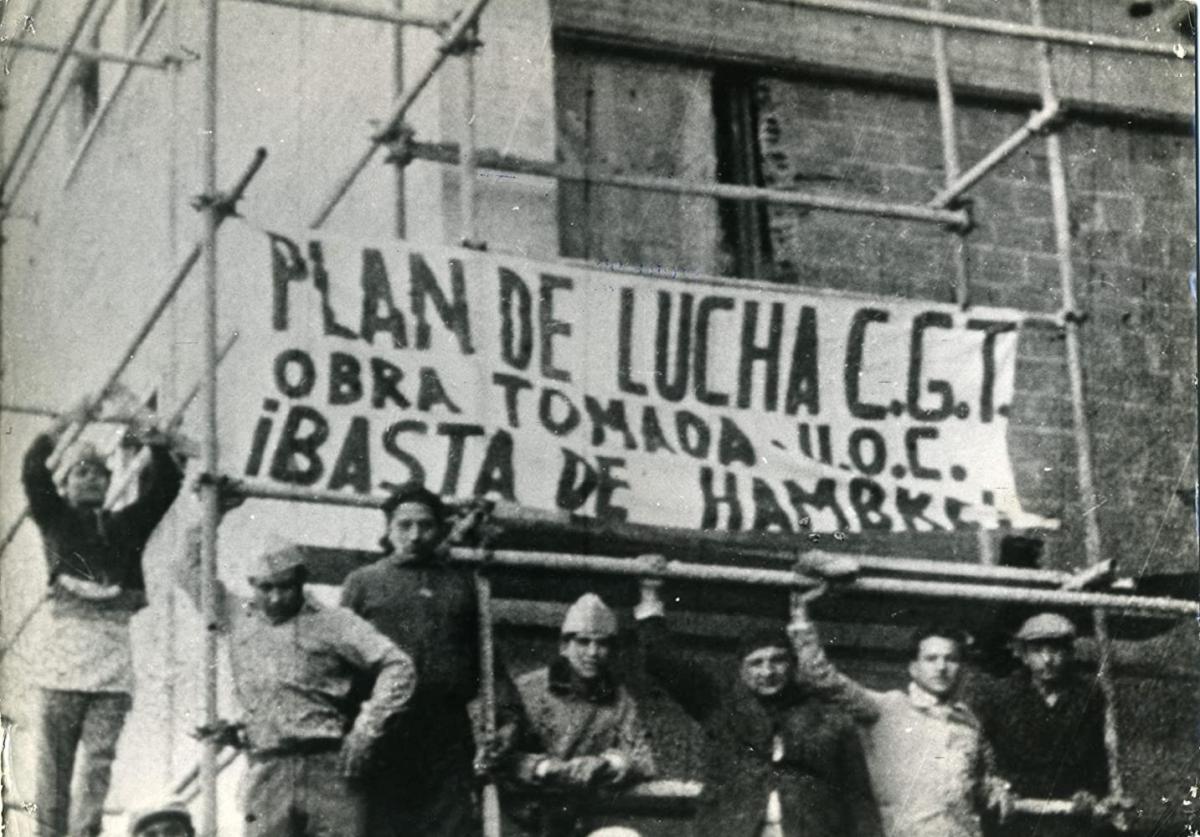
La Hora de los Hornos 1967
After his first two short films, Solanas established his reputation with ‘La Hora de Los Hornos’ (The Hour of the Furnaces- 1967) a 255-minute documentary in 3- parts, co-directed with Octavio Getino.:
Pt 1: “Notes and Testimonies on Neo-colonialism, Violence and Liberation.”
Pt .2: “Act for Liberation.”
Pt 3: “Violence and Liberation.”
This 4-hour documentary defends many struggles around the world. It combines many voices, manifestos (including those by Castro and Guevara) withan array of photogtaphs and fragments of different films (from Fernando Birri to Joris Ivens). The results is a powerful collage of poetry, didactics and the sheer physical impact of images, such as the 3-minute take of the photograph of the frozen face of the dead Che Guevara with his eyes still open, as if still seeing the world from beyond. As a monument to the struggles of liberation in Latin America, it inspired many other documentary film makers, including Chris Marker, the Cinéthique Group, and some have even said they could consider the wonderful trilogy of ‘The Battle of Chile’, by Patricio Guzmán as a final chapter of a profound analysis of the political struggles in Latin America. ‘The Hour of the Furnaces’ won the Sutherland Trophy at the BFI in 1972 and the International Protestant Film Award at the Mannheim-Heidelberg International Film Festival in 1968.
La Hora de los Hornos 1967
“With ‘The Hour of the Furnaces’ I set out to uncover the truth of a country. That was the most epic moment of the project. The discussion at that time was that of the chicken and the egg: what came first, the Revolution, or Revolutionary Cinema? The Hour… opened a third possibility. Today, it’s very hard to convey the fervour with which we wanted to screen the film in every possible way!
Filmed covertly, it was distributed clandestinely in Argentina by workers’ and student groups, as it had been banned, as he said: -
"We also discovered that every comrade who attended such showings did so with the full awareness that he was infringing the System's laws and exposing his personal security to eventual repression. This person was no longer a spectator; on the contrary, from the moment he decided to attend the showing, from the moment he aligned himself on this side by taking risks and contributing his living experience to the meeting, he became an actor, a more important protagonist than those who appeared in the films."
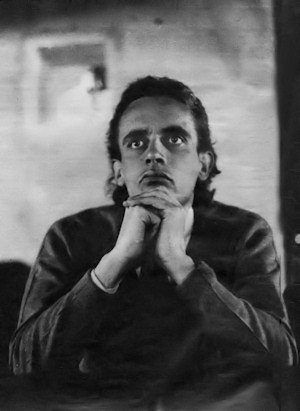
Octavio Getino 1978
Getino and Solanas upset the apple cart, yet the film had a phenomenal impact and has never been forgotten as a vital and influential document in Latin American cinema. Seen today as an “instrument of leftist political and social protest; manifesto, educational cinematic debate, essay of cultural interpretation of Latin America and of Argentina in particular; a filmic collage… juxtaposing fragments from other films of the period… the democratization of images… and unofficial history” (Jorge Ruffinelli). The impact is hard to describe and it remains controversial to this day.
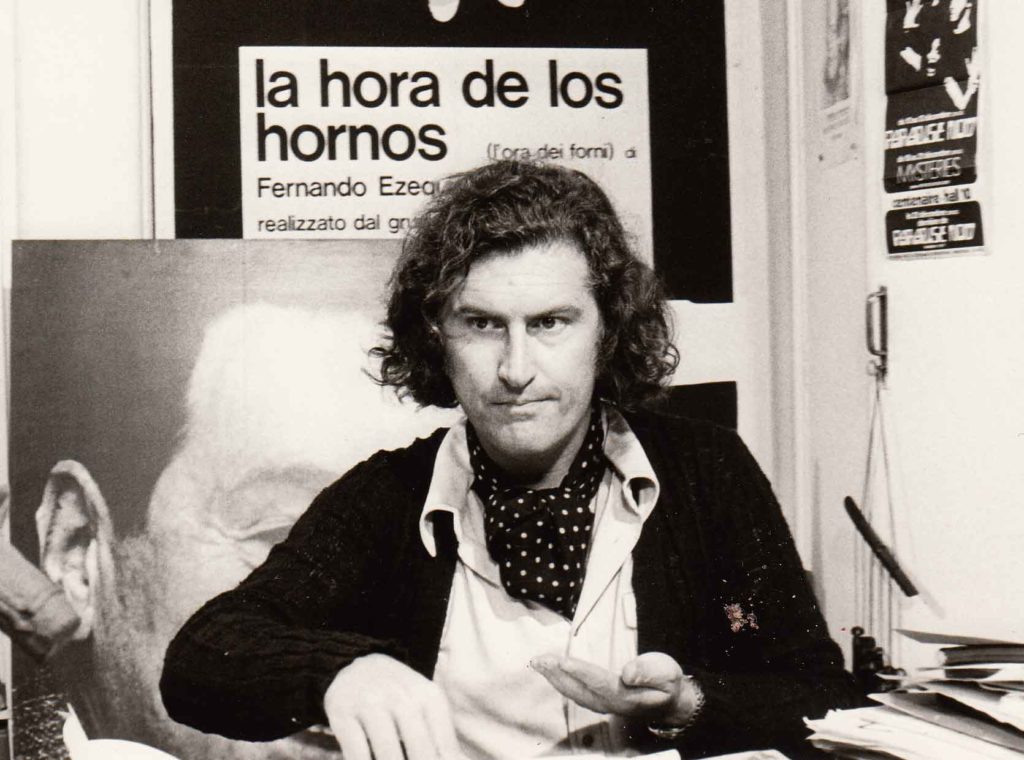
Solanas in 1971
He became a beacon and a figurehead for the Third Cinema Movement for which he and Getino wrote a ‘Manifesto’ in opposition to Hollywood cinema and even to European Auteur cinema. Solanas, Getino and Gerardo Vallejo went on to found the politically committed Grupo Cine Liberación, (Freedom Cinema Group) in 1971. They focussed on the need to express a social conscience and a political voice in film. This led to threats and attempts on his life by right-wing sympathizers. One of his actors was assassinated and he was almost kidnapped, but his support for Juan Domingo Perón, the deposed Argentine president, never wavered. It was not surprising therefore, that Peron summoned them to film his personal testimony, shot in his last years of exile in Madrid, which became the film: “Perón: Political and Doctrinal Update for the seizure of Power.” (Perón: Actualización Política y doctrinaria para la Toma del Poder). In 1976, he was forced to flee into exile in Paris during the Military Dictatorship and only returned to Argentina when democracy was restored with Raúl Alfonsín in 1983.
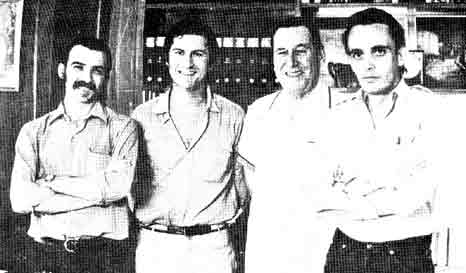
From Left: Gerardo Vallejo, Pino Solanas, Juan Domingo Perón, and Octavio Getino.
Perón: Actualización Política y doctrinaria para la Toma del Poder (complete film- no subtitles)
There has been no appetite in Argentina to create a Film Archive for these historical documents one can only hope that this changes for these are important reflections of the history of the country. Among Solanas' most powerful films, we can include his 2004 documentary A social Genocide: Memoria del Saqueo, a film that illustrated the social and economic circumstances over 25 years of Argentina history. After presenting it at the Berlin Film festival in 2004, he was awarded a special Honorary Golden Bear. He followed this with The Dignity of the Nobodies / La dignidad de los nadies (2005), Argentina latente (2007) and La próxima estación (2008). Four films that address the impact of neo-liberal politics and globalization on Argentina.
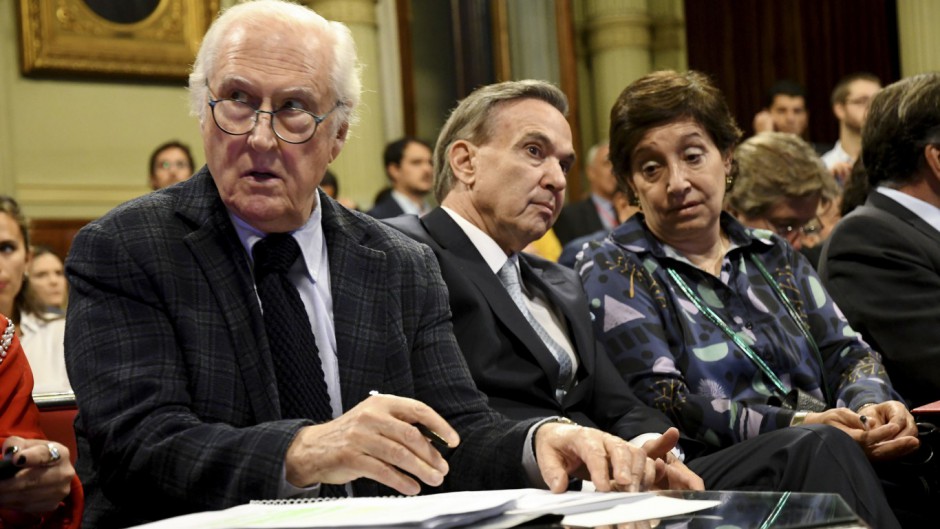
Pino Solanas in Congress
All these political documentaries are intense, even relentless and savage in their message. They are hard to digest as they challenge the viewer at every turn and can be uncomfortable to watch. In 1972, Solanas started to shoot his first fiction feature ‘Sons of Fierro’ (Los Hijos de Fierro 1972) but was unable to complete it until 1977, while in exile in Madrid and Paris. Based on a well-known literary gaucho character called Martín Fierro (by José Hernández) it has a lyrical and epic quality, even if he seldom strays from using it as a political allegory of 1970’s Argentina. Fitted snugly between other documentaries, Solanas continued to shoot fiction. Beautifully shot with interesting visuals, they are more accessible and poetic, despite the fact that similar messages underline the works.
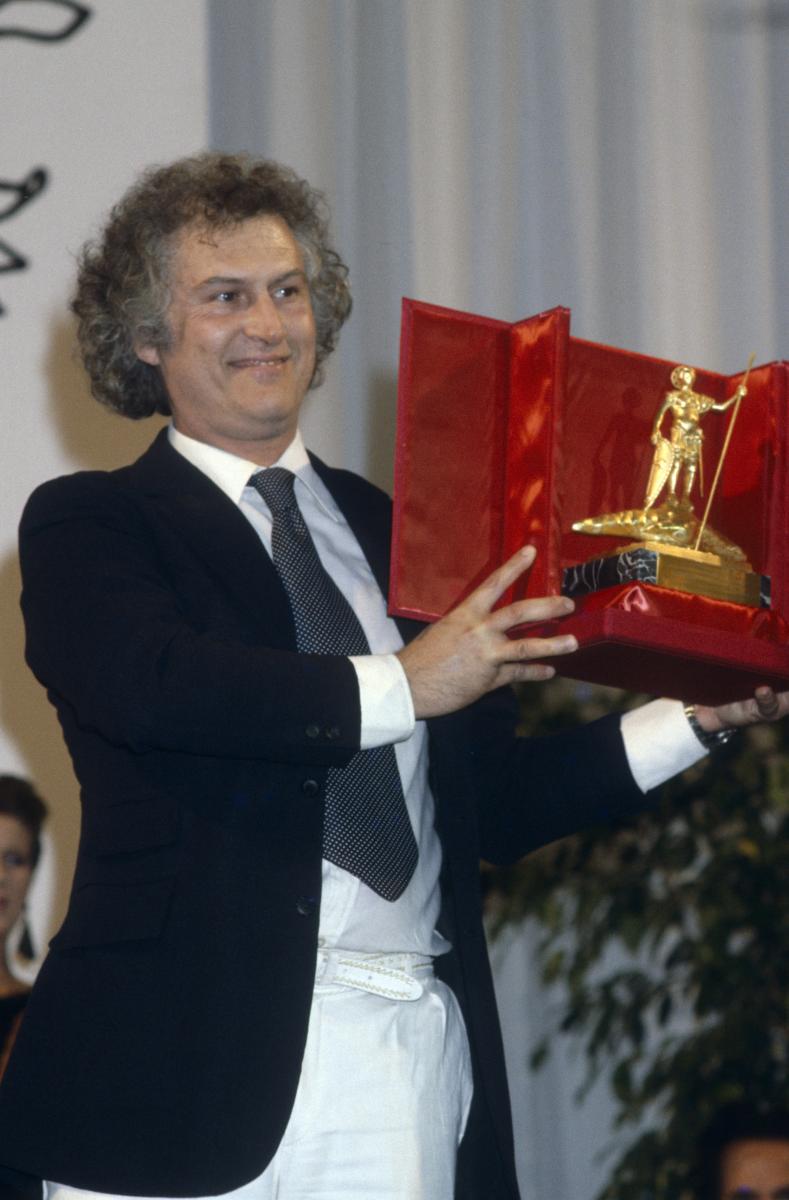
Pino Solanas receiving his award for El Exilio de Gardel 1985,
During this creative period, he released ‘Tangos, the Exile of Gardel (El Exilio de Gardel-1985). A stunning tango musical, with compositions of Astor Piazzola working the music of Carlos Gardel, it relates the stories of a group of Argentine dissidents in Paris during the 1970s, who stage a ‘Tango Review’ based on Carlos Gardel.
(El Exilio de Gardel- complete film- with English subtitles)
Set in iconic areas of the city of Paris, the film features dance, song and music. Despite its political undertones, the film is imbued with elements of nostalgia that cannot fail to move, especially Latinos who get pulled in by its message and extravagant style. It is also a ‘spot the celebrity film’ as it seems everyone who is anyone appears, such as Gaspar Noé, who plays ‘Cool’. A director in his own right, Noé is famous for his series of films that can be defined as cinema du corps / cinema of the body, with an experimental approach, avoiding linear narratives and dealing with controversial ‘violent’ treatment of sexual behaviour, with a strong sense of social nihilism and despair. Then there is the enormously popular Argentine actor and director Eduardo ‘Tato’ Pavlosvky (1933-2015),who plays Dr Figueroa. Gregorio Manzur plays Carlos Gardel. The story unfolds with interesting visuals. Narratively speaking, it is a little hard ‘to follow’, but terrific to watch.
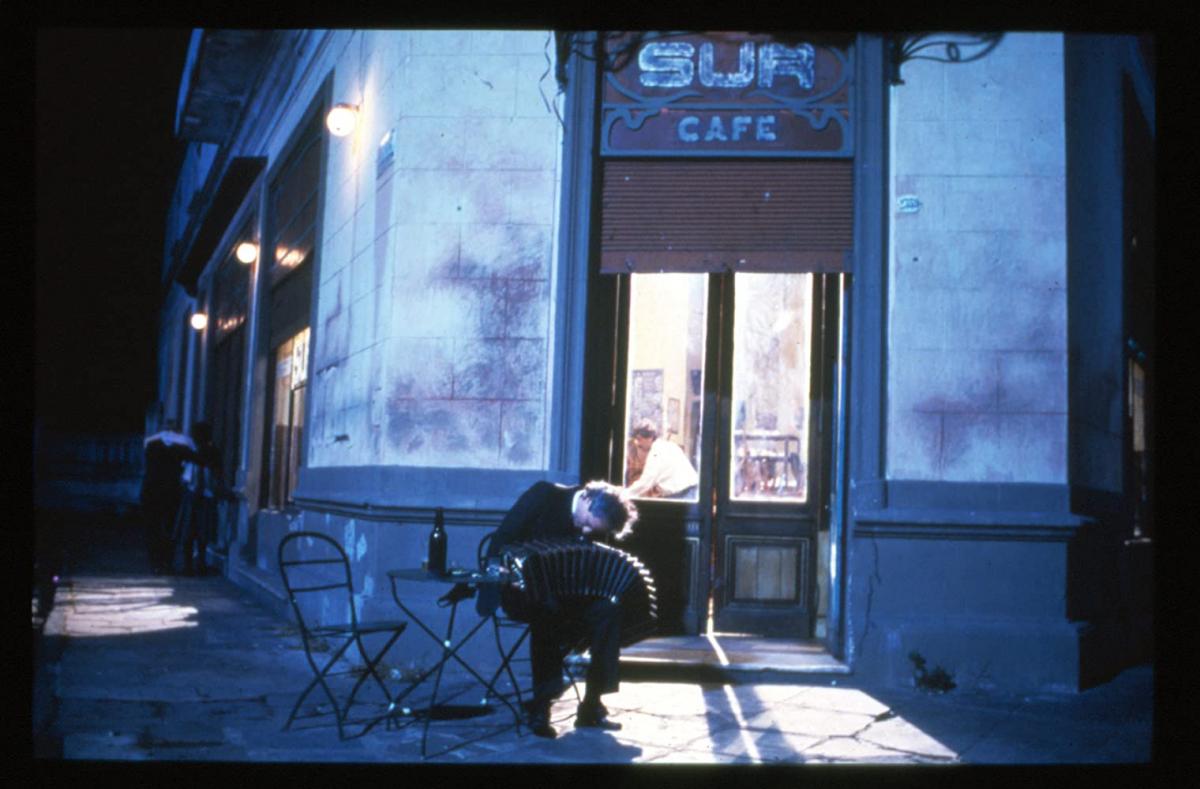
El Sur 1988
Three years later, he premiered ‘El Sur (The South-1988). Written and directed by Solanas, it carried away a number of international awards, including Best Director at the 1988 Cannes Film Festival and was also nominated for the Palme d’Or (which was won that year by Billie August’s ‘Pele the Conqueror’). ‘El Sur’ works effectively as a narrative even though Solanas uses long dreamlike sequences almost devoured by mists. Political prisoner Floreal (Miguel Ángel Solá), in great pain at discovering his wife’s infidelity on his release from prison, drifts through the night, haunted by memories and accompanied by the ghost of his dead friend, El Negro.
El Negro takes him on a journey, much like Scrooge in ‘A Christmas Carol’, to see important events that took place while he was inside, so he understands how the Military regime crushed people’s lives. In the long dark night, Floreal meets friends who have disappeared and those who have died. They stop to exchange memories and stories, uncovering how his wife Rosi came to share her pain with his best friend Roberto, the Corsican (Leótard). In this way, El Negro helps Floreal come to terms with his rage and find the will to live. With the superb Roberto Goyeneche as Amado and music to die for, this is a wonderful film that fuses poetry, song, theatrical elements, moving from the most intimately personal to the wider political panorama. ‘El Sur’ becomes a ‘table of dreams’ where political conversation is always present. It can probably be considered his best and most moving fiction film. (See www.latinolife.co.uk/articles/ten-best-argentine-films)
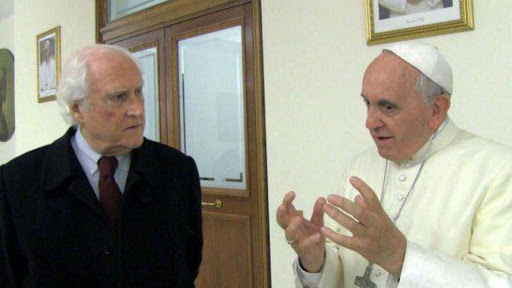
Pino Solanas with Pope Francis at the Vatican
He was a vehement critic of President Carlos Menem for, among other things, his policies of ‘selling the family silver’- privatizing everything, as he saw it, for his own gain. The subsequent economic collapse of Argentina in 2001 with El Corralito and the banks, closing their doors creating havoc and great suffering, moved Solanas to document the issues with a powerful series of non-fiction films starting with A social Genocide/ Memoria del Saqueo (2004), followed by The Dignity of the Nobodies/ La Dignidad de los Nadies ( 2005), Argentina Latente ( 2007) and La Próxima Estación (2008).
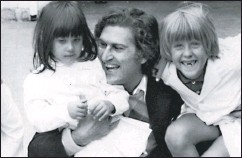 Pino Solanas with two of his children.
Pino Solanas with two of his children.
It is not always easy to see the person behind the works, but in the case of Pino Solanas, his soul was embodied in his films. Touching on the eccentric and contradictory, his deep passion to do what he could to alleviate world poverty and injustice pushed him ever forward with a dynamic energy few could match. Always carrying his notebooks, he continually jotted down observations and ideas, many of which were to emerge in his films, combined with his huge sense of drama, warmth and genuine emotion. A larger-than-life character, he often acted as a catalyst, achieving results through his mere dynamic presence. His speeches were legendary, defiant, powerful and fervent. There were no half-measures for Solanas at any time in his life. Even in his relationships he demonstrated that he had a good eye, by always managing to be accompanied by beautiful women, namely Chunchina Villafañe, Trixie Amuchástegui (the mother of two of his children, including Juan Diego Solanas) Dominique Sanda and his widow, the lovely Ángela Correa, who played one of the leads (Fulo) in his film ‘La Nube (The Cloud- 1998).
La Nube 1998. (no subtitles)
An emotional memorial service was held,with family and friends, at the Pére Lachaise Cemetery in Paris. His ashes will rest in Buenos Aires. He is survived by his wife Ángela Correa, his son Juan, his daughter Victoria and Flexa, and grandchildren.
El Sur-Music trailer of Vuelvo al Sur.





